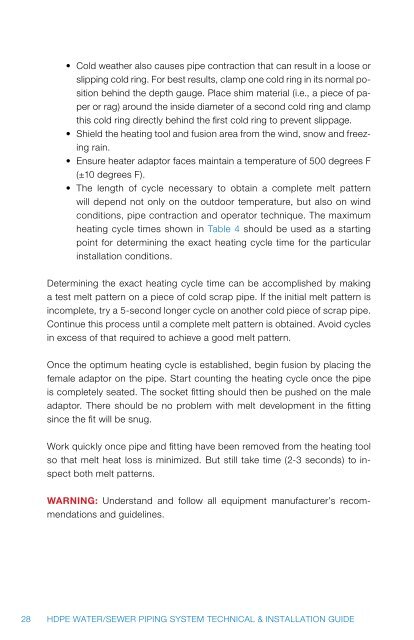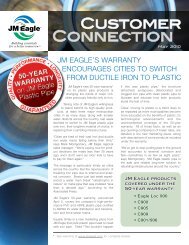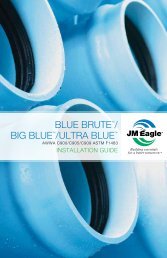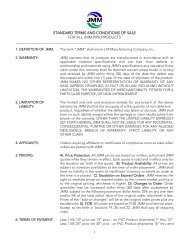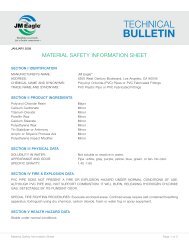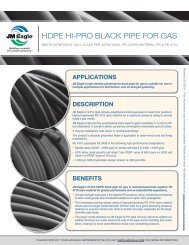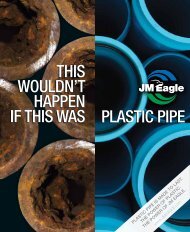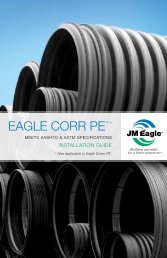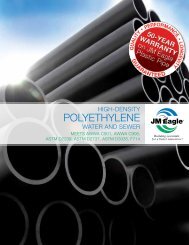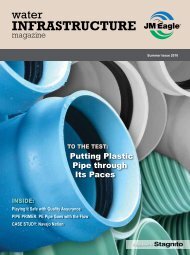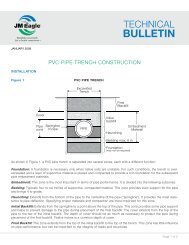Polyethylene Water/Sewer - JM Eagle
Polyethylene Water/Sewer - JM Eagle
Polyethylene Water/Sewer - JM Eagle
- No tags were found...
Create successful ePaper yourself
Turn your PDF publications into a flip-book with our unique Google optimized e-Paper software.
• Cold weather also causes pipe contraction that can result in a loose orslipping cold ring. For best results, clamp one cold ring in its normal positionbehind the depth gauge. Place shim material (i.e., a piece of paperor rag) around the inside diameter of a second cold ring and clampthis cold ring directly behind the first cold ring to prevent slippage.• Shield the heating tool and fusion area from the wind, snow and freezingrain.• Ensure heater adaptor faces maintain a temperature of 500 degrees F(±10 degrees F).• The length of cycle necessary to obtain a complete melt patternwill depend not only on the outdoor temperature, but also on windconditions, pipe contraction and operator technique. The maximumheating cycle times shown in Table 4 should be used as a startingpoint for determining the exact heating cycle time for the particularinstallation conditions.Determining the exact heating cycle time can be accomplished by makinga test melt pattern on a piece of cold scrap pipe. If the initial melt pattern isincomplete, try a 5-second longer cycle on another cold piece of scrap pipe.Continue this process until a complete melt pattern is obtained. Avoid cyclesin excess of that required to achieve a good melt pattern.Once the optimum heating cycle is established, begin fusion by placing thefemale adaptor on the pipe. Start counting the heating cycle once the pipeis completely seated. The socket fitting should then be pushed on the maleadaptor. There should be no problem with melt development in the fittingsince the fit will be snug.Work quickly once pipe and fitting have been removed from the heating toolso that melt heat loss is minimized. But still take time (2-3 seconds) to inspectboth melt patterns.WARNING: Understand and follow all equipment manufacturer’s recommendationsand guidelines.28 HDPE WATER/SEWER PIPING SYSTEM TECHNICAL & INSTALLATION GUIDE


